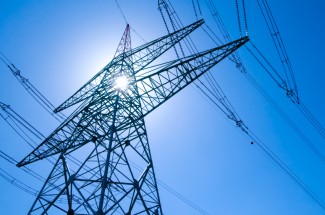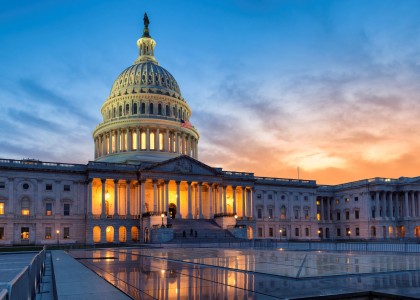Electric grid operators have a promising opportunity to use energy efficiency to boost grid reliability, reduce greenhouse gas emissions, and reduce system costs. By early summer, they are required by a recent Federal Energy Regulatory Commission (FERC) order to propose a new set of rules for deploying efficiency to meet grid demand alongside power plants, storage, and demand response. But to optimize this opportunity, they need to get the rules right.
Energy efficiency already contributes to some wholesale markets
FERC’s decision, known formally as Order 2222, concerns wholesale markets, where utilities and grid operators purchase energy and services for resale to customers. In wholesale markets, energy efficiency improvements (in commercial buildings, for example) are well positioned to offer capacity services—meaning they can reduce the amount of electric power needed to meet a region’s demand at a particular moment in time. These services are purchased at auction in what are known as capacity markets. Of the seven wholesale market operators in the United States, four have capacity markets subject to FERC’s jurisdiction: ISO New England (ISO-NE), PJM, Midcontinent ISO (MISO), and New York ISO (NYISO).
Energy efficiency efforts have already delivered capacity value in ISO-NE and PJM, which cover New England and the Mid-Atlantic states, for more than a decade. During this time, efficiency’s role in providing capacity has grown in both absolute and relative terms. In 2020–21, about 1600 MW (1.1%) of PJM capacity procured at auction will come from energy efficiency, while for ISO-NE that amount is more than 2700 MW (7.5%). Energy efficiency can also participate in MISO’s voluntary capacity auction, where it represents 0.5% of capacity in 2020-21. The result has been lower overall capacity costs, which translates to lower electric rates for customers.
New opportunities
Prior to FERC Order 2222, approved in September 2020, wholesale market operators could, at their discretion, allow energy efficiency to participate in capacity auctions. But the Order sends an important message: Where energy efficiency is capable of providing services to the market, wholesale market operators must allow it to do so. It firmly establishes the right for efficiency providers to be compensated for the benefits they offer to wholesale markets, thereby making efficiency more likely to be procured if its value can be monetized.
This introduces new opportunities. Until now, NYISO has not allowed energy efficiency to participate in capacity auctions. Order 2222 should compel NYISO to develop new wholesale market rules that allow energy efficiency to participate.
In addition to introducing new opportunities for energy efficiency, Order 2222 also removes existing barriers for other aggregated customer-sited resources to participate in wholesale energy markets. This includes behind-the-meter resources like rooftop solar, battery systems, and demand response. These resources can provide additional value to the grid—like energy and ancillary services—that energy efficiency does not provide.
However, the distinct characteristics of these other distributed energy resources (DERs) should not impose more requirements on efficiency than are strictly necessary. For example, while a full accounting of location, metering, and telemetry might be necessary for aggregators or grid operators to manage a DER like behind-the-meter solar PV, energy efficiency is relatively simple (e.g., always on, cannot overload a feeder). Attaching unnecessary obligations to energy efficiency could reduce the resource’s value in the eyes of providers or limit its participation altogether. Grid operators should avoid such restrictions on energy efficiency in their revised tariffs.
Wholesale market operators hold keys in next steps
Each of the market operators has until July to draft so-called tariff provisions that lay out how it intends to comply with Order 2222. Managing DERs introduces a series of challenges, and operators must decide how they will allow aggregations of these DERs to participate. This includes establishing a minimum size requirement and addressing issues related to location, bidding, data, metering, and telemetry, as well as numerous elements of coordination among the operators, DER aggregator, distribution utility, and the relevant electric retail regulatory authorities.
While there may be some unique circumstances in which energy efficiency can interact with other DERs (e.g., a more-efficient thermal envelope enhancing the ability of space heating measures to provide demand flexibility), wholesale market operators should allow energy efficiency to stand on its own merits. For example, FERC Order 719 allows states to opt out of a requirement to allow demand response to participate in wholesale markets. If aggregations containing both energy efficiency and demand response, such as efficient grid-interactive water heaters, are allowed to qualify under this provision, opting out of the latter risks taking the former out with it.
As wholesale market operators prepare their tariff provisions, they have an opportunity to ensure that these new rules work for energy efficiency, and that it be allowed to fully participate on its own merits. Stakeholders and wholesale market operators can build on the success of energy efficiency in NE-ISO and PJM’s capacity markets to ensure electric customers get the benefits of energy efficiency as a resource.



